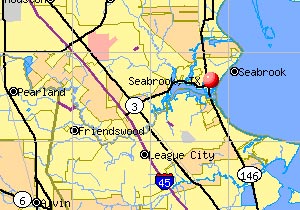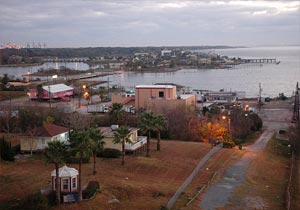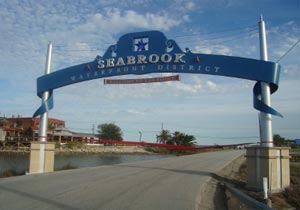ReBuild Houston’s Plan For Rebuilding Critical Real Estate Improvements
ReBuild Houston is the city’s long-term solution to funding capital  improvements within the city. Incorporating a funding mechanism that establishes a pay-as-you-go program with no new debt or interest. Funding increases as old debt is paid, according to Dale Rudick, Deputy Director of the City’s Public Works and Engineering Department and Executive Director of ReBuild Houston. Rudick recently explained the program during a presentation at a local CCIM chapter meeting.
improvements within the city. Incorporating a funding mechanism that establishes a pay-as-you-go program with no new debt or interest. Funding increases as old debt is paid, according to Dale Rudick, Deputy Director of the City’s Public Works and Engineering Department and Executive Director of ReBuild Houston. Rudick recently explained the program during a presentation at a local CCIM chapter meeting.
Approved by the voters in November 2010, ReBuild Houston funds specifically cover street and drainage infrastructure. Rudick said is it unlike any other capital program in the country with respect to its funding mechanics, methology for implementation, and transparency. With no new debt occurring, Rudick said the current debt will be exhausted soon after 2030, when all funds will then be available for active projects. The city anticipates substantial increases in funding by 2020 due to debt repayment.
ReBuild Houston’s four funding sources provide restricted uses for each fund.
1. Drainage Utility Fee – Implemented in 2012 as an annual fee based on the square footage of actual impervious surface (hard area) determined by the use of digitized mapping data. Impervious surface means any area that does not readily absorb water, such as buildings, decks, patios, driveways, and other covered areas. Properties are classified into two categories, residential or non-residential, with applicable fees charged annually. This funding source has accounted for approximately $235 million to date.
2. Developer Impact Fee – Approved in October 2012 and set in April 2013. The collection of fees will start in April 2014. Unlike the Drainage Utility Fee, the impact fee  is regulated by the state and will be a one-time fee. Primary uses include drainage projects providing capacity to offset future development and street projects providing added capacity for future development.
is regulated by the state and will be a one-time fee. Primary uses include drainage projects providing capacity to offset future development and street projects providing added capacity for future development.
3. Ad Valorem Taxes – Property taxes, one of the primary funding sources for capital improvements before ReBuild Houston, were used to pay off bonds issued to pay for construction. Currently 11.8 cents of every $100 of property value collected from property owners is going to pay off the debt incurred on previous street and drainage projects. As the debt is paid off, the balance of funds from the 11.8 cents reserved by the city will go toward funding new street and drainage projects. And as Rudnick pointed out, there is a bonus: “new projects will be paid in cash, which means taxpayers will get about twice as much product for every dollar” since interest is no longer an issue.
4. Third-party Funds – includes funds from Metro, TxDOT, federal government and other traditional governmental sources. Due to budget restraints, these monies have decreased substantially in recent years but can be used for the most diverse uses, including sidewalk projects, hike and bike trails, and traffic signalization projects.
ReBuild Houston is an extension of the current Capital Improvements Program, with a 10-year tool complementing the current five-year program. Proposed needs are identified and prioritized based on comprehensive, citywide data. A pre-engineering analysis is conducted; project prioritization is based on a benefit-to-cost ratio, with the highest rated projects continuing in the program.




 reportedly signed for the 235,000 square feet in proposed Five Chasewood Park. Other energy-related firms, such as Southwestern Energy and Chevron, opted for owner-occupied properties. Southwestern broke ground on its 515,000-square-foot headquarters in North Houston, while officials with Chevron announced its plans for a new 1.7 million square-foot building at 1600 Louisiana in the Central Business District (CBD). Plans for the new building will be finalized in 2014, with occupancy scheduled for late 2016. Chevron will add the third tower adjacent to its current buildings at 1400 Smith and 1500 Louisiana, creating a downtown campus complete with employee amenities such as dining, fitness, training and conference facilities. These new announcements follow the first quarter’s news of BHP Billiton’s new 560,000-square-foot headquarters building in Uptown and Phillip 66’s multiple-building campus of 1.1 million in Westchase, among others.
reportedly signed for the 235,000 square feet in proposed Five Chasewood Park. Other energy-related firms, such as Southwestern Energy and Chevron, opted for owner-occupied properties. Southwestern broke ground on its 515,000-square-foot headquarters in North Houston, while officials with Chevron announced its plans for a new 1.7 million square-foot building at 1600 Louisiana in the Central Business District (CBD). Plans for the new building will be finalized in 2014, with occupancy scheduled for late 2016. Chevron will add the third tower adjacent to its current buildings at 1400 Smith and 1500 Louisiana, creating a downtown campus complete with employee amenities such as dining, fitness, training and conference facilities. These new announcements follow the first quarter’s news of BHP Billiton’s new 560,000-square-foot headquarters building in Uptown and Phillip 66’s multiple-building campus of 1.1 million in Westchase, among others. quarter of positive absorption – with the last eight quarters averaging 1.5 million square feet each – the industrial market appears to have stabilized, waiting for the next wave of new product to enter the market. Vacancy overall is down slightly from last quarter to 6.9%, compared to 7.5% a year ago. Manufacturing space has the lowest vacancy of 5.4%. More than 1.2 million square feet in 17 properties came online during the first quarter, entering the market collectively at 74.5% preleased.
quarter of positive absorption – with the last eight quarters averaging 1.5 million square feet each – the industrial market appears to have stabilized, waiting for the next wave of new product to enter the market. Vacancy overall is down slightly from last quarter to 6.9%, compared to 7.5% a year ago. Manufacturing space has the lowest vacancy of 5.4%. More than 1.2 million square feet in 17 properties came online during the first quarter, entering the market collectively at 74.5% preleased.

